

From 1971 to 1976 and then again from 1981 on Carl Barks had permission from the Walt Disney Corporation to create oil paintings based on the ducks from his comic book stories. Barks utilized this outstanding possibility to finish more than 200 brilliant works that all incorporated the duck characters. Except for one! There he only used a single character from one of his stories, FC0238 Voodoo Hoodoo, namely a zombie*. This is the story.
* In its basic form a zombie is regarded to be a dead person who is brought back to life through the means of Voodoo magic. It all originates from Africa but is nowadays more commonly known to take place in Haiti.
|
THE BEGINNING |
|||
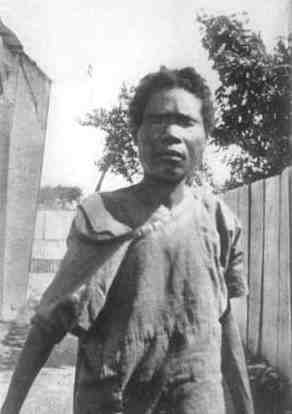 Even today thousands of people in Haiti are thought to be zombies. One example is Felicia Felix-Mentor, who died and was buried in 1907, but was found wandering the countryside in 1937 (photo). |
|
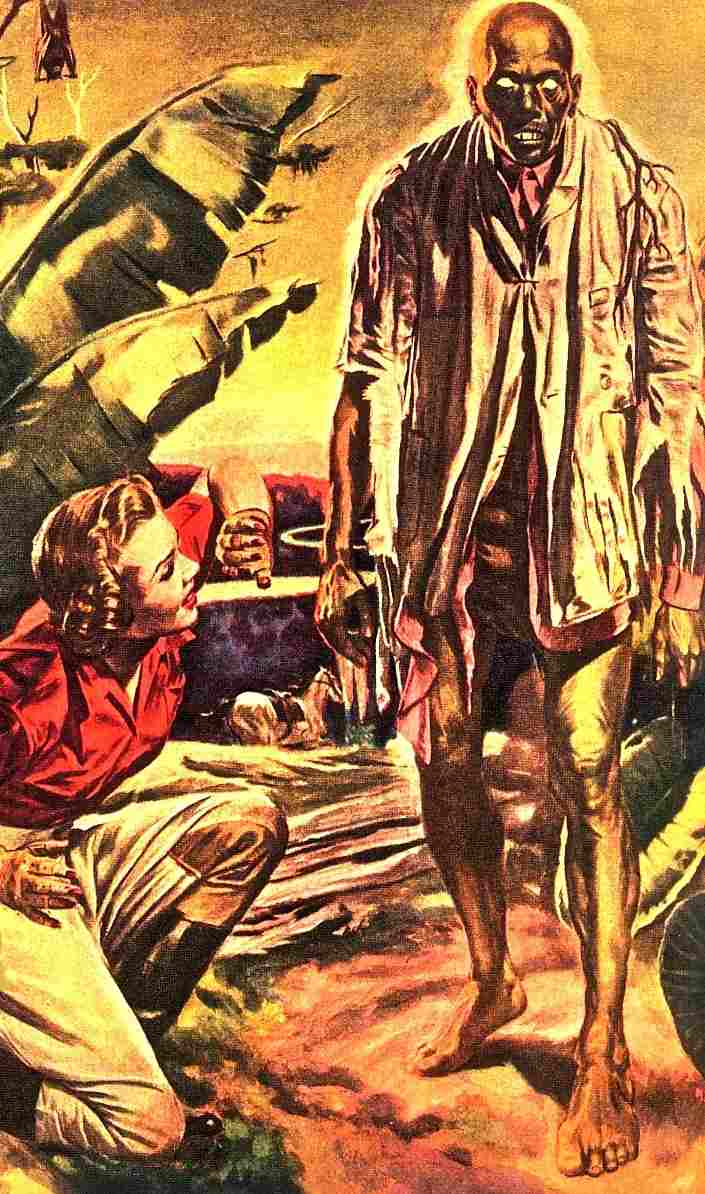 But the main trigger was a thrilling 1942 painting by Joe Little titled I Met a Zombie! rendered in American Weekly's Sunday edition showing a human-like zombie with torn clothes. |
|
|
THE SWAMP STORIES |
||
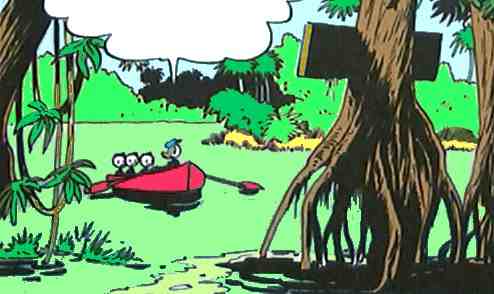 FC0062 Mystery of the Swamp - 1945 |
WDCS147 'Blackmail Dinner' - 1952 |
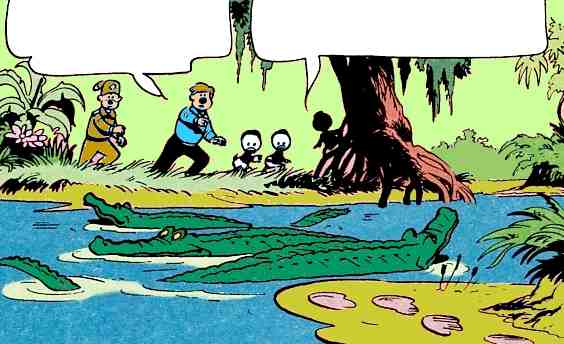 U$57 The Swamp of No Return - 1965 |
|
Over time Barks made these three comic book stories that mostly took place in swamps. The two oldest ones were located in The Everglades in Florida ('...the creepiest swamp in the world', as the nephews shuddered), whereas the newest was situated in Dismal Swamps outside Duckburg, where the narrator chills the reader by exclaiming '...where only the hissing of varmints answer your cries'... |
||
|
THE VOODOO STORY |
||
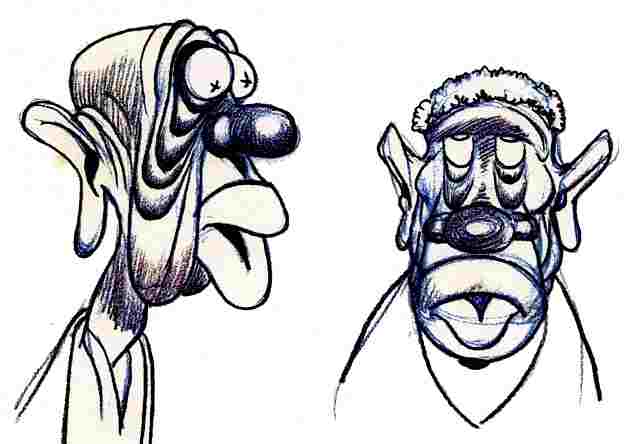 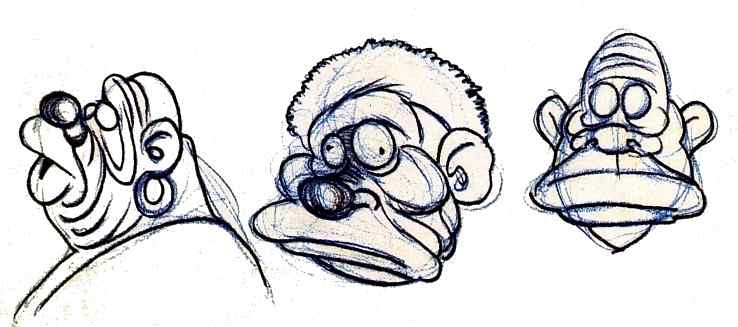 |
||
|
The all-dominant secondary character in FC0238 Voodoo Hoodoo is, of course, the totally oblivious (he can only hold one thought at a time!) zombie affectionately referred to as Bombie the Zombie by the nephews. When Barks tried to come up with a plausible appearance for Bombie he doodled the 5 faces seen here. For some reason Barks ended up dispensing the stereotypical fat lips, and the final result portrayed Bombie with blank eyeballs and no eyelids. When Barks had delivered the story to the publisher it was feared that children would be frightened by that appearance, and the publisher added pupils and half-closed eyelids to soften things up. |
||
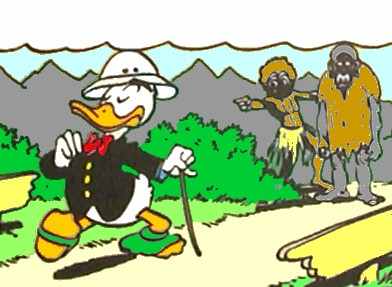 |
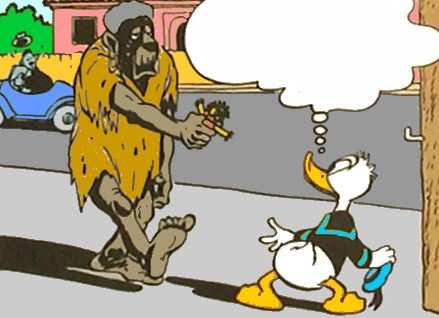 |
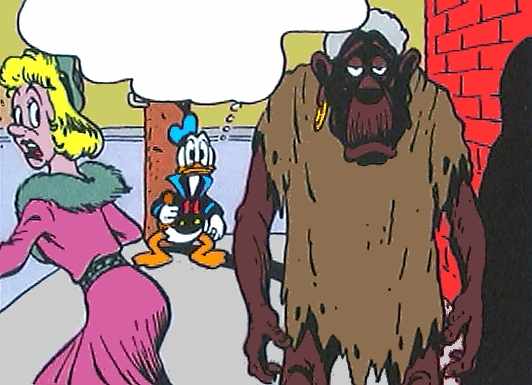 |
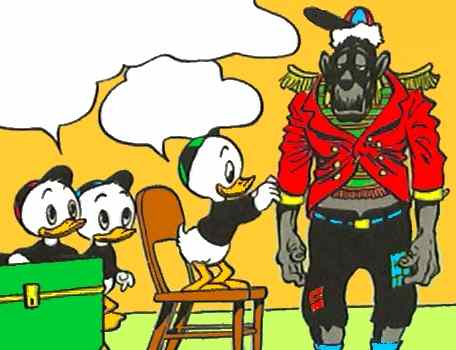 |
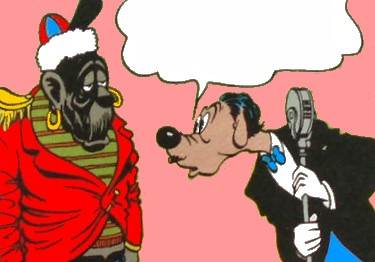 |
|
|
Barks ended up drawing an extremely soulful(!) zombie, who oozes personality without even having to say or do anything! Barks had no intention of imitating the horrid monsters from the EC comics, so Bombie turned out to be somewhat of a cuddly monster in the story. |
||
|
THE BACKUP |
|
|
Dawn Mystique - 1973 |
Song of the South - 1976 |
|
When it came to the naturalistic
backgrounds in his paintings, Barks often received both
inspiration and help from his wife Garé, who was an educated and highly
skilled landscape artist. And she was a great help to him by
offering pointers in getting the flora and atmosphere right in
his zombie painting. As he admitted: I'm not very good at swamps. That's
for the guys who did that stuff for EC Comics.
Apparently, it was especially due to Garé's technical help that
her husband ended up doing a solid job. |
|
...AND FINALLY:
|
THE PAINTING |
|
|
|
|
|
Idea sketch:
Finished painting: |
|
|
EXTRA |
||
|
21-73 In Voodoo Land |
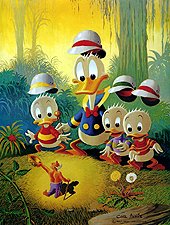 17-74 Voodoo Hoodooed |
1996 In the Clutches of a Voodoo Curse |
|
Also, Barks made these renderings, two oils and one pastel, in accordance with the story's overall plotline. |
||
http://www.cbarks.dk/THEDUCKLESSPAINTING.htm |
Date 2013-12-13 |